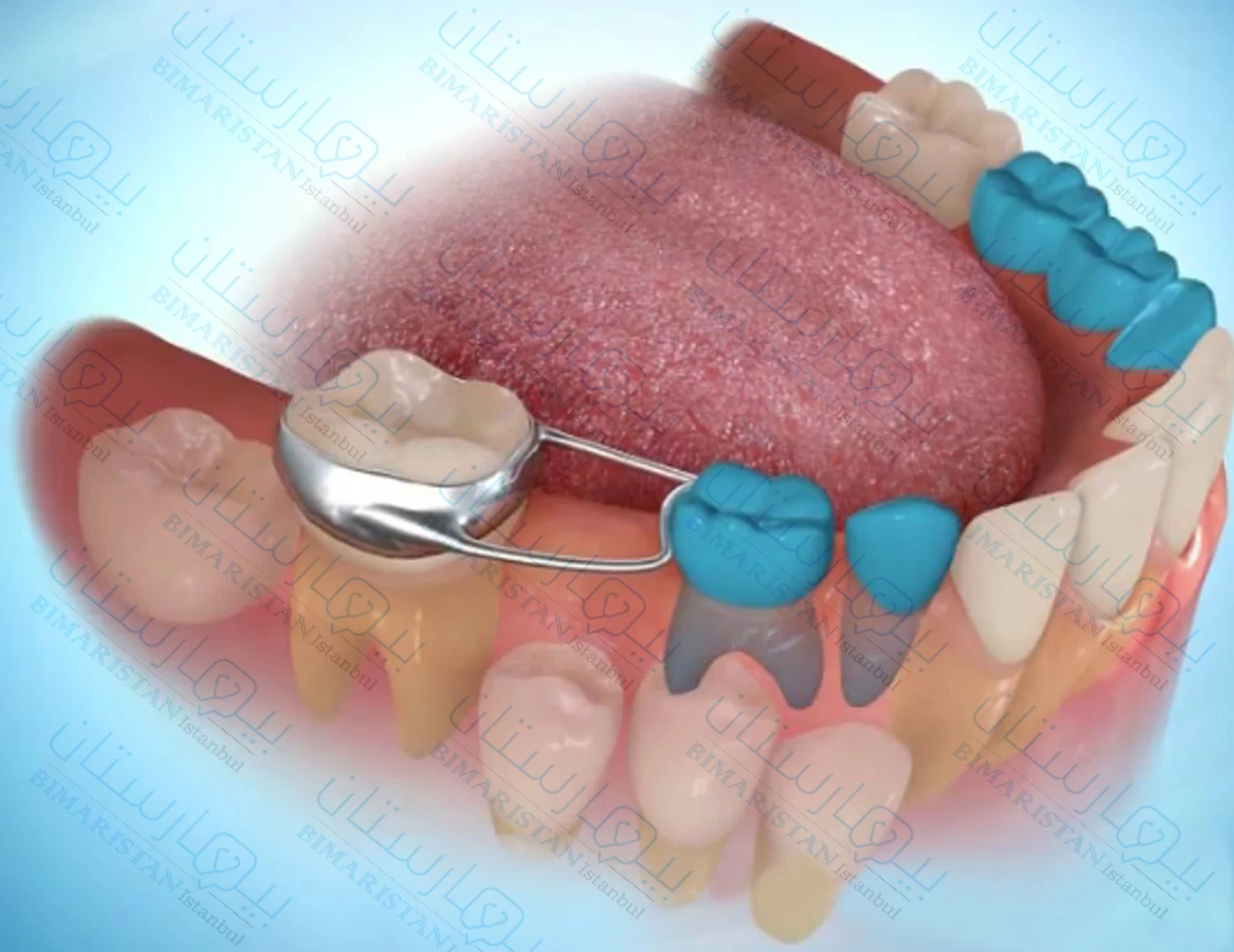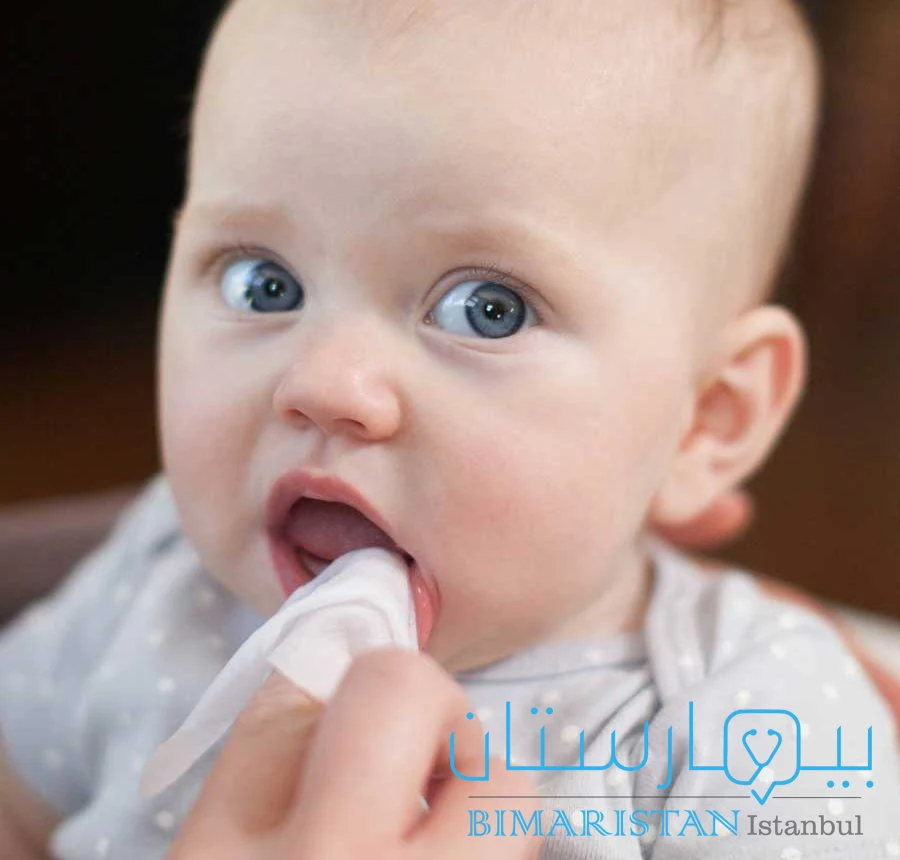هناك العديد من إجراءات طب أسنان الأطفال العلاجية والوقائية المتاحة في تركيا حيث تحتاج أسنان الأطفال في طور النمو للمتابعة وتحري أي خلل حاصل للتداخل عليه.
يشمل طب أسنان الأطفال المعالجات المتعلقة بأمراض الأسنان والفم والفكين عند الأطفال من الولادة.
تتشابه إجراءات طب أسنان الأطفال وإجراءات طب الأسنان عند البالغين نسبياً مع بعض الاختلافات القليلة، حيث تتطلب الإجراءات عند الأطفال مواعيداً بتواتر أكبر مع طبيب الأسنان لأهمية مراقبة نمو أسنان الأطفال من قبل طبيب أسنان الأطفال للتأكد من أن كل شيء يسير بسلاسة لتفادي أي مشاكل في المستقبل قد تؤثر على الأسنان الدائمة أو الإطباق.
يجب أن يتمتع طفلك بأسنان ولثة صحية من أجل صحة جيدة بشكل عام حيث يمكن أن تؤدي الأسنان المصابة أو المريضة أو ضعيفة النمو إلى:
- سوء التغذية
- التهابات مؤلمة وخطيرة
- مشاكل في النطق
- مشاكل في نمو عظم الوجه والفك
- مشاكل الثقة بالنفس
- مشاكل في إطباق الاسنان
لذا عندما يتعلق الأمر بالحفاظ على أفواه الأطفال صحية فإن العادات الروتينية لصحة الفم مثل تنظيف الأسنان بالفرشاة مرتين في اليوم والتنظيف بالخيط مرة واحدة في اليوم وزيارة طبيب الأسنان بانتظام ضرورية جداً.
بالإضافة إلى العناية المنزلية الجيدة يمكن أن تساعد بعض إجراءات الأسنان الوقائية المختلفة في العيادة أيضاً في الحفاظ على أسنان الأطفال بصحة جيدة، سنتحدث عن إجراءات طب أسنان الأطفال الأكثر شيوعاً سواء في سياق الوقاية أو العلاج من خلال المقال.
إجراءات طب أسنان الأطفال الوقائية
من أهم ممارسات طب الأسنان الوقائي لدى الأطفال:
المواد السادة للشقوق والوهاد والميازيب
أثناء التنظيف بالفرشاة والخيط لإزالة بقايا الطعام من الأسطح الملساء لأسنان الأطفال قد يكون من الصعب تنظيف بعض الأماكن التي يصعب الوصول إليها بالفم مثل الأضراس أو الأسنان الخلفية.
يمكن لطبيب أسنان طفلك أن يضع مواد سادة للشقوق والوهاد والميازيب العميقة في الأسنان للمساعدة في العمل كحاجز ضد تجمع الطعام والأحماض في هذه المناطق الضعيفة على السطح الماضغ للسن، إنه إجراء بسيط وغير مؤلم ولا يتطلب أي تخدير ويمكن تطبيقه على كل سن في بضع دقائق فقط.
تكون المواد السادة أكثر فاعلية عند وضعها على الأسنان الدائمة بعد ظهورها مباشرة.
تبزغ الأضراس الدائمة الأولى للأطفال في سن السادسة تقريباً وتبزغ الأضراس الدائمة الثانية في سن 12 عاماً تقريباً، تعد المواد السادة من إجراءات طب أسنان الأطفال الوقائية الضرورية في عمر الطفولة للوقاية من التسوس لذا تأكد من مراجعة طبيب أسنان طفلك.
علاجات الفلور
يساعد الفلور على منع تسوس الأسنان من خلال جعل الأسنان أكثر مقاومة لهجمات الحمض من اللويحة السنية والبكتيريا والسكريات في الفم، يمكن للأطفال الحصول على الفلورايد من خلال ماء الصنبور ومعجون الأسنان الغني بالفلورايد وغسول الفم والعلاجات التي يطبقها طبيب الأسنان.
يتم تطبيق علاجات الفلور الاحترافية في العيادة بسرعة وسهولة على شكل هلام أو رغوة أو ورنيش، الفلورايد المستخدم في هذه العلاجات أقوى من غسول الفم أو معاجين الأسنان الحاوية على الفلور.
كما هو الحال مع المواد السادة للشقوق فإن علاجات الفلوريد القوية ليست ضرورية دائماً لكل طفل لذا تحدث مع طبيب الأسنان ليقوم بإجراء فحص لمعرفة ما إذا كان طفلك معرضاً بدرجة أكبر للإصابة بتسوس الأسنان، إذا كان طفلك يحتاج إلى الفلورايد يمكن لطبيب الأسنان أن يقدم لك خطة الفلورايد بناءً على احتياجاته الخاصة.
لا تتردد بالتواصل مع مركز بيمارستان في تركيا، نقدم خدماتنا على امتداد كبير وبشكل دقيق.
الأشعة السينية
تعد الأشعة السينية من إجراءات طب أسنان الأطفال المهمة لمساعدة طبيب الأسنان في مراقبة ما يحدث تحت اللثة في فم الطفل، تعتبر الأشعة السينية آمنة بشكل عام للأطفال ولكن يجب على أطباء الأسنان أخذ أقل قدر ممكن للحصول على المعلومات التي يحتاجون إليها.
بالنسبة للأطفال المعرضين لخطر كبير للإصابة بتسوس الأسنان توصي جمعية طب الأسنان الأمريكية وإدارة الغذاء والدواء الأمريكية بإجراء فحوصات بالأشعة السينية في حال الضرورة والحاجة لها، يحتاج الأطفال المعرضون لخطر منخفض من تسوس الأسنان إلى إجراء أشعة سينية بشكل أقل تكراراً، ستحتاج إلى استشارة طبيب الأسنان لتحديد عدد المرات التي يحتاج فيها طفلك إلى الأشعة السينية.
حافظات المسافة
جهاز الحفاظ على المسافة هو جهاز صغير يحافظ بشكل فعال على الفجوة الناتجة عن الأسنان المفقودة بسبب الخلع قبل بزوغ السن البديل الدائم، بحيث عندما يحين الوقت لبزوغه وظهوره يتم ذلك دون حدوث أية مشاكل.

حافظة المسافة لمنع تحرك الأسنان واختلال الإطباق عند الأطفال
إجراءات طب أسنان الأطفال العلاجية
تتضمن إجراءات طب أسنان الأطفال العلاجية مجموعة من الخدمات والإجراءات الطبية أكثرها شيوعاً:
الحشوات
تعتبر حشوات الأسنان من أكثر إجراءات طب أسنان الأطفال شيوعاً التي يقوم بها الأطباء فأسنان الأطفال تكون عرضة للتسوس، في معظم الأحيان يمكن معالجة التسوس بإجراء حشو أسنان سريع وبسيط.
سيقوم طبيب أخصائي طب أسنان الأطفال بتخدير السن المصابة وإجراء حفر الأسنان لإزالة أي نسج سنية تالفة، بعدها سيتم حشو السن بمادة من اختيار طبيب الأسنان والوالدين، هناك مواد شائعة كالأملغم أو الخزف وكلاهما متين ويمكنه إغلاق السن.
علاج قناة الجذور عند الأطفال
في حال إصابة أسنان الطفل بالإنتان الشديد فقد يقترح طبيب أسنان الأطفال استئصال اللب وإجراء علاج قناة الجذر لإنقاذ السن المصابة بدلاً من خلعها.
يتم إجراء علاج قناة الجذر من قبل طبيب أسنان أطفال لإزالة اللب (العصب) المصاب في السن، اللب هو نسيج موجود في جميع الأسنان يحتوي على أعصاب وأوعية دموية تملأ جذور السن تثبته جذور الأسنان بإحكام باللثة وعظم الفك.
يعد الخلع من إجراءات طب أسنان الأطفال الأكثر شيوعاً بالمقارنة مع علاج العصب ولكن القيام بخلع السن في حال كان من الممكن الحفاظ فقد يسبب ذلك إلى إتلاف بنية اللثة والفكين عند الطفل.
تنظيف الأسنان في العيادة
إن زيارة الطفل عيادة طب الأسنان للتنظيف المنتظم هو إجراء شائع ومهم من خدمات طب الأسنان الأطفال، تعتبر عمليات التنظيف الروتينية مهمة لأن أسنان الأطفال أكثر عرضة للتسوس بسبب الاستهلاك المفرط للسكر وقلة نظافة الفم.
عادة ما تكون عمليات تنظيف الأسنان مريحة وسهلة ومباشرة وتسمح لطبيب أسنان الأطفال بإزالة أي لويحة متراكمة يمكن أن تتحول لاحقاً إلى جير (قلح).
الخلع
من إجراءات طب أسنان الأطفال الشائعة جداً أيضاً إجراء قلع الأسنان حيث يحتاج العديد من الأطفال إلى إجراء الخلع، عندما تصاب الأسنان بالإنتان بشكل مفرط نتيجة النخر السني أو غيره أو إذا لم يكن لها مكان في الفم فقد يوصي طبيب أسنان الأطفال بخلع السن.
قد تكون عمليات قلع الأسنان مخيفة للأطفال لكن أطباء أسنان الأطفال يتمتعون بالخبرة في إجراء هذه العملية على الأطفال، يتم إجراء التخدير الموضعي بحيث يقل احتمال شعور الطفل بأي ألم.
تيجان الأسنان
عند إصابة السن الشديدة قد يوصي طبيب أسنان الأطفال بوضع تاج الأسنان، هذه واحدة من أكثر إجراءات طب الأسنان شيوعاً التي يتم إجراؤها اليوم لعلاج أسنان الأطفال، يمكن لتيجان الأسنان أن ترمم وتعوض الأسنان التي تضررت بشدة.
تقويم الأسنان
يعد تصحيح وتقويم الأسنان من إجراءات طب أسنان الأطفال الضرورية جداً، حيث أن العديد من المشاكل الاطباقية التي تظهر في الفكين يمكن علاجها بسهولة أكبر في حال تم تداركها في عمر الطفولة مثل تقدم الفك السفلي وغيرها.
أول زيارة للطفل لطبيب الأسنان
يجب أن تكون زيارة طفلك الأولى لعيادة طب أسنان الأطفال بين وقت ظهور السن الأول ووقت اكتمال ظهور جميع الأسنان اللبنية (قبل عامين ونصف).
يوصي العديد من أطباء الأسنان بإجراء زيارة “تجريبية” يمكن أن يساعد ذلك طفلك على التعود على المشاهد والأصوات والروائح والشعور بالعيادة قبل الفحص الفعلي.
سيشعر الأطفال الذين اعتادوا مسح لثتهم وتنظيف أسنانهم كل يوم براحة أكبر عند الذهاب إلى طبيب الأسنان.
نصائح العناية بأسنان الطفل في المنزل
- اغسل اللثة والأسنان الخاصين بأطفالك الصغار مرتين على الأقل كل يوم وخاصة قبل النوم.
- اسمح للطفل بإجراء روتين الصحة الفموية باستعمال الفرشاة بنفسه لتعلم عادة تنظيف الأسنان ولكن يجب أن تتحقق من تنظيف أسنانهم بنفسك.
- اصطحب طفلك إلى طبيب أسنان كل 6 أشهر، دع طبيب الأسنان يعرف ما إذا كان طفلك لديه عادة مص الإبهام أو يتنفس من خلال الفم.
- علم طفلك كيف يلعب بأمان وماذا يفعل في حالة كسر سنه أو انخلاعه، إذا تصرفت بسرعة يمكنك غالباً إنقاذ السن.
- عندما يكون لطفلك أسنان يجب أن يبدأ في تنظيف الأسنان بالخيط كل مساء قبل الذهاب إلى الفراش.
- قد يحتاج طفلك إلى علاج تقويم الأسنان لمنع حدوث مشاكل طويلة الأمد.
العناية بأسنان الرضيع
على الرغم من أن الأطفال حديثي الولادة والرضع ليس لديهم أسنان فمن المهم العناية بفم ولثة الأطفال من الولادة أيضاً، من خلال اتباع هذه النصائح:
- استخدم منشفة مبللة لمسح لثة طفلك بعد كل وجبة.
- تجنب وضع رضيعك أو طفلك الصغير في الفراش مع زجاجة من الحليب أو العصير أو الماء المحلى بالسكر، استخدم الماء فقط لزجاجات النوم.
- ابدأ باستخدام فرشاة أسنان ناعمة بدلاً من منشفة لتنظيف أسنان طفلك بمجرد ظهور أسنانه الأولى (عادةً ما بين 5 و 8 أشهر من العمر).
- اسأل طبيب طفلك عما إذا كان طفلك يحتاج إلى تناول الفلوريد للأسنان عن طريق الفم.
 تنظيف فم الطفل بقطعة قماش
تنظيف فم الطفل بقطعة قماش
